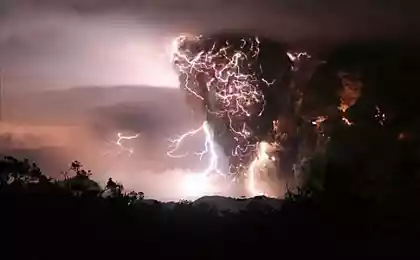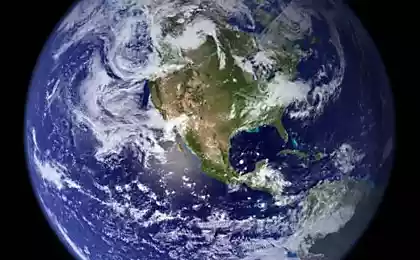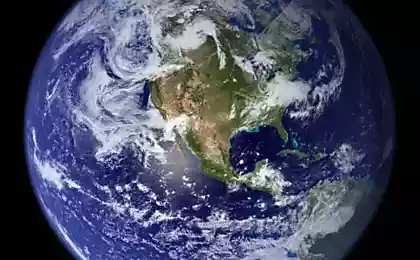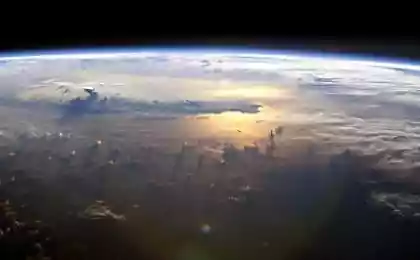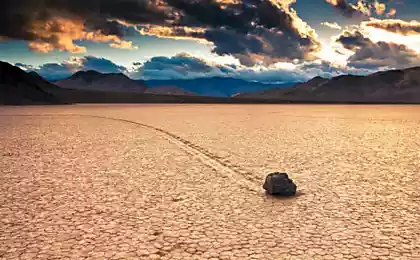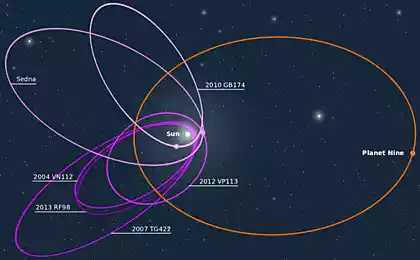995
10 amazing secrets of the world that science finally revealed
"Moving rocks" strange foot giraffe singing sand dunes, zebra stripes and the origin of the world's oceans ... Website publishes a selection of puzzles that we have been able to unravel the past few years.1. As a "move" the rocks in Death Valley? Dry lake in Death Valley in California - a place where there is the phenomenon of "moving the stones." For decades, some force seemed to move along the surface of the earth under huge boulders weighing 300 kg, which left behind a long furrows in the sand. Nobody has ever seen how the movement.

In 2011, a group of researchers established a special camera, weather station to measure wind gusts, GPS-tracking system, and waited.
In December 2013. the result was obtained. Due to the rain and snow on the dried bottom of the accumulated layer of water is about 7 cm. At night, hit the frost, and the water became ice. Weak wind was enough to make the ice began to move and push the boulders at the bottom of the lake, and those left furrows in the dirt. These grooves become visible only a few months later, when the bottom of the lake dried up again.
Clumps move only when all these conditions are perfectly coincide.
2. giraffes can stand on such thin legs? Weight giraffe can reach a ton, when this they are incredibly thin leg bones. However, the bones are not broken.

To find out why, researchers found the bones of dead animals in a special frame, and then secure them to the weight of 250 kg to simulate the weight of the animal. Bones Lego handle the load.
The reason was a fibrous tissue, which is in particular a groove along the entire length of the bone. By itself, the elastic fibrous ligament does not create forces as muscle tissue, it provides the only passive support. This mechanism prevents the rapid exhaustion of the animal, because he does not need intensive use muscles to move their weight. Also, fibrous tissue protects the foot giraffe, and prevents fractures.
3. Singing sand dyunyV world there are 35 sand dunes, a loud sound resembling the sound of the cello. "Singing" can last for 15 minutes and be heard at a distance of 10 km. Some dunes "sing" only occasionally, some - every day.
At first, researchers thought that the cause of sound - vibrations in the sand layers that are close to the surface of the dunes. But then it was discovered that the sound of the dunes, you can recreate in the laboratory, allowing a sand slide down the incline. This proved that "singing" sand dunes instead. Sound is produced by the vibration of the sand grains themselves when they slipped down the cascade. The range of sound depend on the speed of the sand grains.
4. Pigeon Bermuda treugolnikEta mystery emerged in the 1960s when a professor at Cornell University have studied the ability of pigeons find their way home. He let the birds from different places of the State of New York and they all returned except issued in Jersey Hill. These pigeons are constantly lost.

One day, with a strong experimental delay still found a way home, but it seemed they were completely disoriented and flying erratically. The professor was unable to explain why this happened.
Half a century later managed to uncover the mystery of Dr. Jonathan Hagstrumu: "Birds navigate using the" compass "and" map ". Compass, as a rule, is the position of the Sun or the Earth's magnetic field. A sound as they use the card. And all this tells them how far they are from home ».
Hagstrum believes that pigeons use infrasound, ie very low frequency sound that the human ear can not hear. When they lost in the Jersey Hill, the air temperature and the wind made infrasound signal spread high in the atmosphere, and the pigeons did not hear it about the earth's surface. However, when one day the temperature and wind conditions were excellent, the pigeons were able to hear the infrasound and found his way home.
5. The unique origin of a single Australian Vulcanal Australia has only one volcanic area, which stretches from Melbourne to Mount Gambier. Over the past four million years there was observed about 400 volcanic events, and the last one was about 5000 years ago. The scientists could not figure out what caused the eruption of the region in which there is not no other volcanic activity.
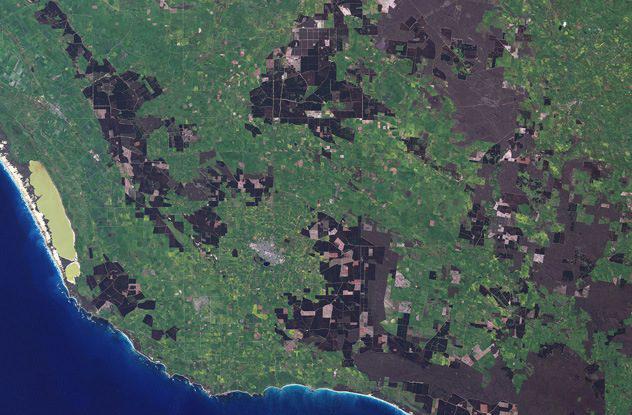
Now the secret is disclosed. Most volcanoes are located at the edges of tectonic plates that are constantly moving (approximately a few centimeters per year) over the surface of the Earth's mantle. But in Australia, changes in the thickness of the continent led to the unique conditions in which heat comes from the mantle to the surface. In conjunction with the drift of the Australian north (it takes about 7 cm per year), this led to the fact that on the continent there was a hot spot, creating magma.
6. Fish living in polluted vodeS 1940 to 1970 years, the plant dumped waste containing polychlorinated biphenyls (PCBs), right in the harbor of New Bedford, Massachusetts. And this is extremely polluted harbor is home to a biological puzzle, which, according to the researchers, is finally solved.
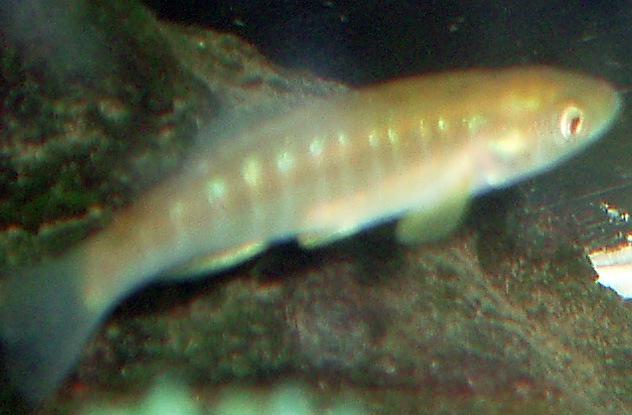
In spite of the serious pollution, the fish called the Atlantic fundulyus continues to live and thrive in the New Bedford harbor. Fundulyus able to genetically adapt to the poison in his body, and there is no reaction to the deadly toxins. Fish are so adapted to the pollution that live in clean water, it has probably not been able to.
7. How did the "underwater wave" Underwater wave, also called "internal waves", located under the surface of the ocean and are hidden from our eyes. They raise the surface of the ocean just a few centimeters, so they are extremely difficult to detect, and then help can only companions.
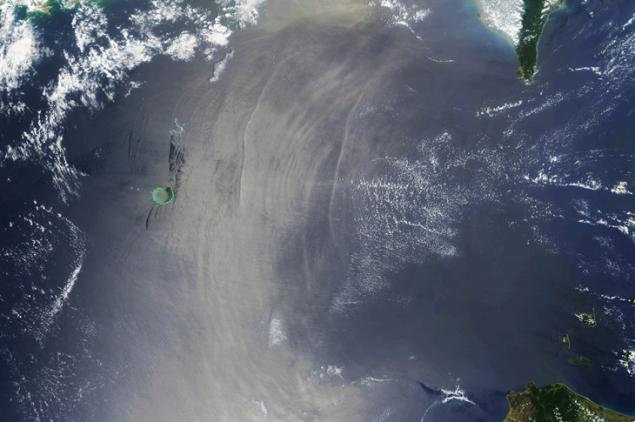
The biggest internal waves arise in Luzon Strait, between the Philippines and Taiwan. They can climb the 170 meters and travel long distances, moving for a moment only a few centimeters.
Experts believe that we need to understand how these waves arise, as they can be an important factor in global climate change. The water is cold and the internal waves salty. It is mixed with water surface waves, warmer and not as salty. Internal waves are transferred through the ocean of large amounts of salt, heat and nutrients. With their help, the heat is transmitted from the ocean surface to its depths.
Researchers have long wanted to see how there are huge internal waves in the Strait of Luzon. They are difficult to see in the ocean, but the devices can detect the difference in density between the internal wave and the water that surrounds it. The experts decided to start the process to simulate the appearance of waves in the 15-meter vessel. Get internal waves managed by submitting a pressurized stream of cold water for two "ridges" which are at the bottom of the tank. So it seems that the huge internal waves arise because of the chain of mountain ranges located at the bottom of the Strait.
8. Why do zebras poloskiPochemu zebra stripes? Scientists decided to find the answer to this question. They learned where they live all kinds of zebras, horses and donkeys, have collected a lot of information about color, size and location of zebra stripes on their bodies. Then the mapped habitat of tsetse flies, horse flies and deer flies. We took into account several variables, and finally conducted a statistical analysis. And they have the answer: the reason - in flies!
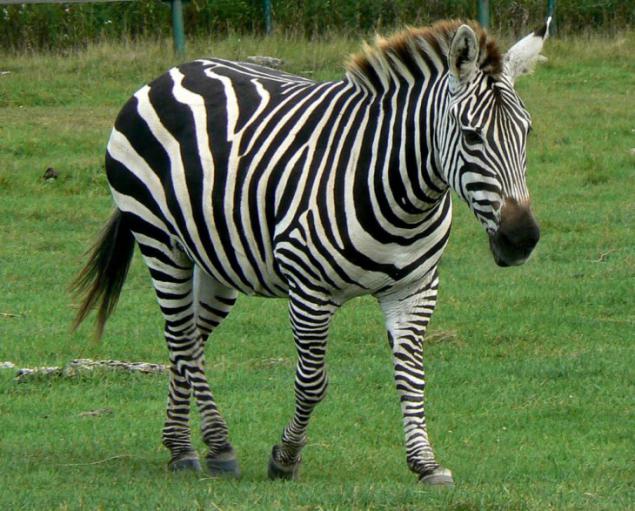
Zebras suffer more from biting flies, as their hair shorter than that of the same horses, for example. Bloodsucking insects can carry deadly diseases, so that zebras need to avoid this risk by any available means.
9. The mass extinction of 90% of species Zemli252 million years ago, about 90% of animal species on the planet was destroyed. This period is also known as "The Great Extinction" and considered to be the mass extinction on Earth.
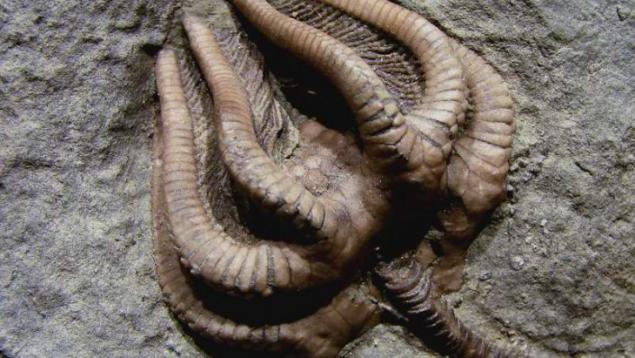
According to the researchers from MIT, the culprit was the extinction of one-celled organisms called methanosarcina, which consumes carbon compounds to form methane. This microbe exists today in landfills, in oil wells and in the intestines of cows. In the Permian period, scientists believe, methanosarcina survived the genetic transformation of bacteria, after which the microbe was able to eat a bunch of organic substances containing acetate, and located on the ocean floor.
The population of microbes literally exploded, spewing into the atmosphere huge amounts of methane and oxides of the ocean. Most of the plants and animals on land were killed, along with fish and shellfish in the ocean.
10. The origin of the oceans ZemliVoda covers about 70% of the surface of our planet. Previously, scientists thought that at the time the Earth's water in it was not, and its surface was melted due to collisions with the various celestial bodies. It was believed that there was water on the planet much later, as a result of collisions with asteroids and comets wet.
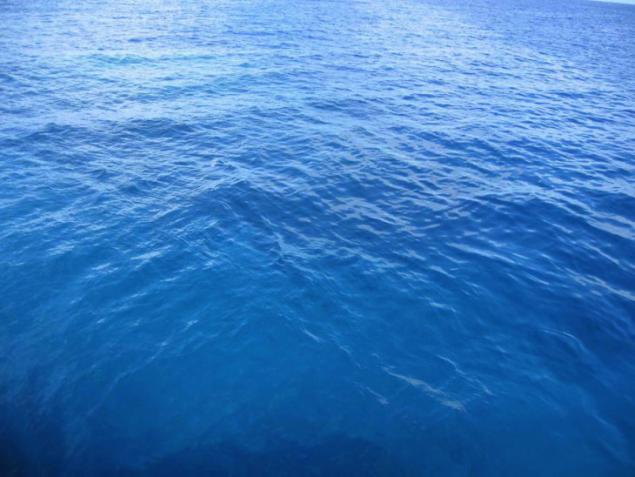
However, a new study shows that the water was on the surface of the earth at the stage of its formation. The same may be true for other planets in the solar system.
To determine when the water came to Earth, the researchers compared the two groups of meteorites. The first group are carbonaceous chondrites, the oldest meteorites ever found. They appeared around the same time as our sun, even before any planets in the solar system.
The second group - a meteorite, who arrived from Vesta, a large asteroid that was formed in the same period as the Earth, that is, approximately 14 million years after the birth of the solar system.
These two types of meteorites have the same chemical composition and contain a lot of water. For this reason, researchers believe that the Earth was formed on the surface of the water, carbonaceous chondrites unit tunes to about 4, 6 billion years ago.
via factroom.ru

In 2011, a group of researchers established a special camera, weather station to measure wind gusts, GPS-tracking system, and waited.
In December 2013. the result was obtained. Due to the rain and snow on the dried bottom of the accumulated layer of water is about 7 cm. At night, hit the frost, and the water became ice. Weak wind was enough to make the ice began to move and push the boulders at the bottom of the lake, and those left furrows in the dirt. These grooves become visible only a few months later, when the bottom of the lake dried up again.
Clumps move only when all these conditions are perfectly coincide.
2. giraffes can stand on such thin legs? Weight giraffe can reach a ton, when this they are incredibly thin leg bones. However, the bones are not broken.

To find out why, researchers found the bones of dead animals in a special frame, and then secure them to the weight of 250 kg to simulate the weight of the animal. Bones Lego handle the load.
The reason was a fibrous tissue, which is in particular a groove along the entire length of the bone. By itself, the elastic fibrous ligament does not create forces as muscle tissue, it provides the only passive support. This mechanism prevents the rapid exhaustion of the animal, because he does not need intensive use muscles to move their weight. Also, fibrous tissue protects the foot giraffe, and prevents fractures.
3. Singing sand dyunyV world there are 35 sand dunes, a loud sound resembling the sound of the cello. "Singing" can last for 15 minutes and be heard at a distance of 10 km. Some dunes "sing" only occasionally, some - every day.
At first, researchers thought that the cause of sound - vibrations in the sand layers that are close to the surface of the dunes. But then it was discovered that the sound of the dunes, you can recreate in the laboratory, allowing a sand slide down the incline. This proved that "singing" sand dunes instead. Sound is produced by the vibration of the sand grains themselves when they slipped down the cascade. The range of sound depend on the speed of the sand grains.
4. Pigeon Bermuda treugolnikEta mystery emerged in the 1960s when a professor at Cornell University have studied the ability of pigeons find their way home. He let the birds from different places of the State of New York and they all returned except issued in Jersey Hill. These pigeons are constantly lost.

One day, with a strong experimental delay still found a way home, but it seemed they were completely disoriented and flying erratically. The professor was unable to explain why this happened.
Half a century later managed to uncover the mystery of Dr. Jonathan Hagstrumu: "Birds navigate using the" compass "and" map ". Compass, as a rule, is the position of the Sun or the Earth's magnetic field. A sound as they use the card. And all this tells them how far they are from home ».
Hagstrum believes that pigeons use infrasound, ie very low frequency sound that the human ear can not hear. When they lost in the Jersey Hill, the air temperature and the wind made infrasound signal spread high in the atmosphere, and the pigeons did not hear it about the earth's surface. However, when one day the temperature and wind conditions were excellent, the pigeons were able to hear the infrasound and found his way home.
5. The unique origin of a single Australian Vulcanal Australia has only one volcanic area, which stretches from Melbourne to Mount Gambier. Over the past four million years there was observed about 400 volcanic events, and the last one was about 5000 years ago. The scientists could not figure out what caused the eruption of the region in which there is not no other volcanic activity.

Now the secret is disclosed. Most volcanoes are located at the edges of tectonic plates that are constantly moving (approximately a few centimeters per year) over the surface of the Earth's mantle. But in Australia, changes in the thickness of the continent led to the unique conditions in which heat comes from the mantle to the surface. In conjunction with the drift of the Australian north (it takes about 7 cm per year), this led to the fact that on the continent there was a hot spot, creating magma.
6. Fish living in polluted vodeS 1940 to 1970 years, the plant dumped waste containing polychlorinated biphenyls (PCBs), right in the harbor of New Bedford, Massachusetts. And this is extremely polluted harbor is home to a biological puzzle, which, according to the researchers, is finally solved.

In spite of the serious pollution, the fish called the Atlantic fundulyus continues to live and thrive in the New Bedford harbor. Fundulyus able to genetically adapt to the poison in his body, and there is no reaction to the deadly toxins. Fish are so adapted to the pollution that live in clean water, it has probably not been able to.
7. How did the "underwater wave" Underwater wave, also called "internal waves", located under the surface of the ocean and are hidden from our eyes. They raise the surface of the ocean just a few centimeters, so they are extremely difficult to detect, and then help can only companions.

The biggest internal waves arise in Luzon Strait, between the Philippines and Taiwan. They can climb the 170 meters and travel long distances, moving for a moment only a few centimeters.
Experts believe that we need to understand how these waves arise, as they can be an important factor in global climate change. The water is cold and the internal waves salty. It is mixed with water surface waves, warmer and not as salty. Internal waves are transferred through the ocean of large amounts of salt, heat and nutrients. With their help, the heat is transmitted from the ocean surface to its depths.
Researchers have long wanted to see how there are huge internal waves in the Strait of Luzon. They are difficult to see in the ocean, but the devices can detect the difference in density between the internal wave and the water that surrounds it. The experts decided to start the process to simulate the appearance of waves in the 15-meter vessel. Get internal waves managed by submitting a pressurized stream of cold water for two "ridges" which are at the bottom of the tank. So it seems that the huge internal waves arise because of the chain of mountain ranges located at the bottom of the Strait.
8. Why do zebras poloskiPochemu zebra stripes? Scientists decided to find the answer to this question. They learned where they live all kinds of zebras, horses and donkeys, have collected a lot of information about color, size and location of zebra stripes on their bodies. Then the mapped habitat of tsetse flies, horse flies and deer flies. We took into account several variables, and finally conducted a statistical analysis. And they have the answer: the reason - in flies!

Zebras suffer more from biting flies, as their hair shorter than that of the same horses, for example. Bloodsucking insects can carry deadly diseases, so that zebras need to avoid this risk by any available means.
9. The mass extinction of 90% of species Zemli252 million years ago, about 90% of animal species on the planet was destroyed. This period is also known as "The Great Extinction" and considered to be the mass extinction on Earth.

According to the researchers from MIT, the culprit was the extinction of one-celled organisms called methanosarcina, which consumes carbon compounds to form methane. This microbe exists today in landfills, in oil wells and in the intestines of cows. In the Permian period, scientists believe, methanosarcina survived the genetic transformation of bacteria, after which the microbe was able to eat a bunch of organic substances containing acetate, and located on the ocean floor.
The population of microbes literally exploded, spewing into the atmosphere huge amounts of methane and oxides of the ocean. Most of the plants and animals on land were killed, along with fish and shellfish in the ocean.
10. The origin of the oceans ZemliVoda covers about 70% of the surface of our planet. Previously, scientists thought that at the time the Earth's water in it was not, and its surface was melted due to collisions with the various celestial bodies. It was believed that there was water on the planet much later, as a result of collisions with asteroids and comets wet.

However, a new study shows that the water was on the surface of the earth at the stage of its formation. The same may be true for other planets in the solar system.
To determine when the water came to Earth, the researchers compared the two groups of meteorites. The first group are carbonaceous chondrites, the oldest meteorites ever found. They appeared around the same time as our sun, even before any planets in the solar system.
The second group - a meteorite, who arrived from Vesta, a large asteroid that was formed in the same period as the Earth, that is, approximately 14 million years after the birth of the solar system.
These two types of meteorites have the same chemical composition and contain a lot of water. For this reason, researchers believe that the Earth was formed on the surface of the water, carbonaceous chondrites unit tunes to about 4, 6 billion years ago.
via factroom.ru
"Our planet is - a lonely speck in the infinite darkness of space ..."
The most annoying and irritating sound of a man - a nagging

